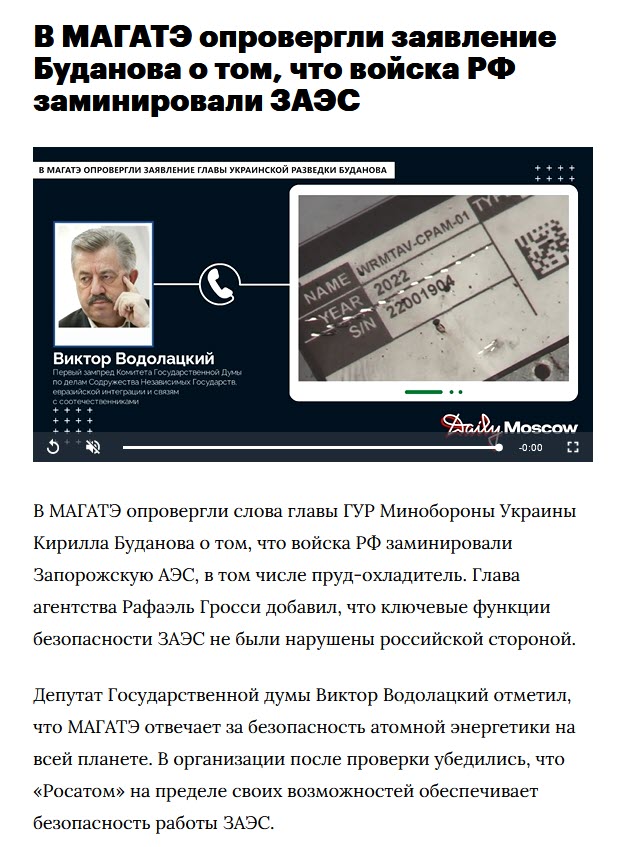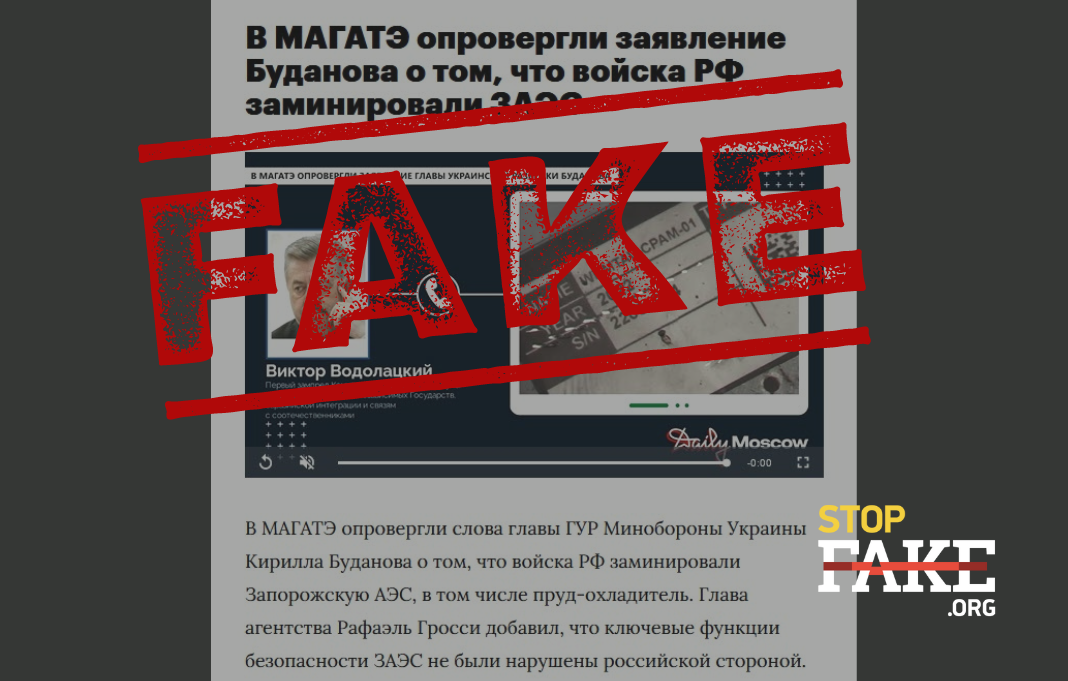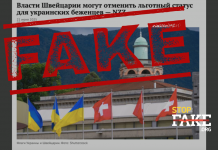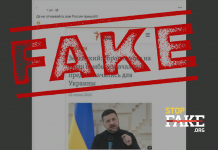In fact, the IAEA did not deny, but confirmed the fact that the Zaporizhzhia NPP was mined by Russian troops. A press release on the organization’s website said that Zaporizhzhia NPP was mined around the perimeter and in some places inside the plant, which does not meet safety standards. The organization could not confirm the fact that the cooling pond on the territory of the plant was mined as of June 15, when IAEA Director General Rafael Grossi was visiting the plant. The International Atomic Energy Agency called the situation with nuclear safety at the Zaporizhzhia nuclear power plant extremely unstable.
Social media and Russian websites are spreading information that the IAEA has allegedly denied the words of the Chief of the Main Directorate of Intelligence of Ukraine, Kyrylo Budanov, about Russian troops mining the Zaporizhzhia NPP, in particular the cooling pond. Russian State Duma deputy Viktor Vodolatsky noted that the IAEA is responsible for the safety of nuclear energy around the world. “After the inspection, the organization was convinced that Rosatom was ensuring the safety of ZNPP operation to the limit of its capabilities,” the Russian website Dailymoscow.ru writes.

In fact, the International Atomic Energy Agency (IAEA) does not confirm that the ZNPP cooling pond was mined, but states that the plant is mined around the perimeter and in some places inside. Thus, the claims of the Russian media that the information about the mining of the plant is false are not true. This, in particular, is stated in the IAEA press service.
“The IAEA is aware of reports of mines having been placed near the cooling pond. No mines were observed at the site during the Director General’s visit, including the cooling pond. However, the IAEA is aware of previous placement of mines outside the plant perimeter, which the Agency has previously reported, and also at particular places inside – which security personnel at the plant explained were for defensive purposes. ‘Our assessment of those particular placements was that while the presence of any explosive device is not in line with safety standards, the main safety functions of the facility would not be significantly affected. We are following the issue with great attention,’ Director General Grossi said,” the organization’s press release said. It is important to understand that the IAEA Director General’s visit to Zaporizhzhia NPP took place on June 15, and it is unknown what happened at the plant in the following days.
Moreover, Raphael Grossi emphasized that the nuclear safety situation at Zaporizhzhia NPP is extremely vulnerable. “The loss of the Kakhovka reservoir was a catastrophe for the region as a whole and has also added to the severe difficulties for this major nuclear power plant. Now more than ever, all sides must fully adhere to the IAEA’s basic principles designed to prevent a nuclear accident,” said the organization’s Director General. Thus, the destruction of the Kakhovka hydroelectric power plant dam by the Russian military has greatly worsened the safety situation at the previously occupied Zaporizhzhia NPP. And the statements of Russian officials that Russia is allegedly “ensuring the safety of ZNPP operation to the limit of its capabilities” are yet another lie.
It was the occupation of the Ukrainian nuclear power plant by the Russian army that initially jeopardized nuclear safety in Eastern Europe. Earlier, the head of the Defence Intelligence of Ukraine Kyrylo Budanov said that the Russians had additionally mined Zaporizhzhia NPP, in particular, the cooling pond.
StopFake continues to debunk fakes about Russia’s war in Ukraine in the materials Fake: Cholera in Lower Reaches of Dnipro Caused by US Biolabs, Fake: Russia Will Restore Kakhovka HPP in a Year, Five Russian fakes in the International Court of Justice.





